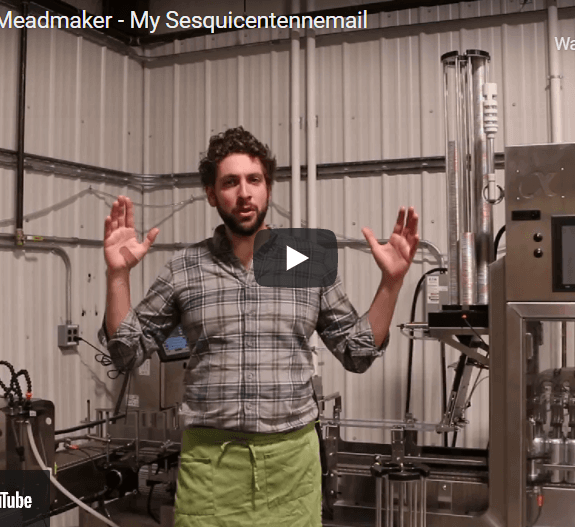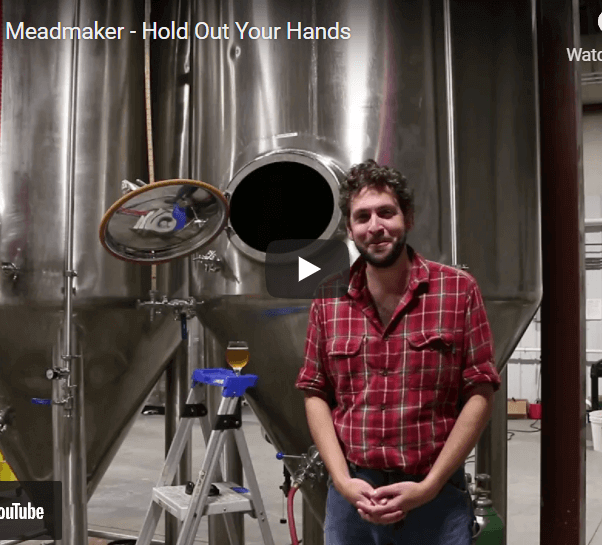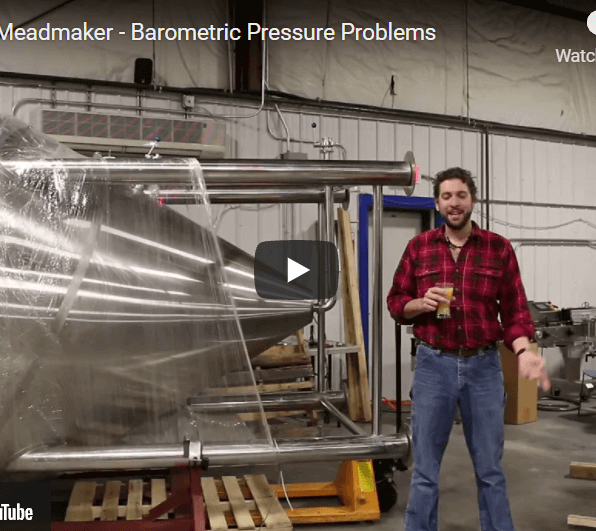Is this the week that I show you guys how our canning line works? No! (Though I do show you in this video!)
Welcome to Ask the Meadmaker, where I, Ricky the Meadmaker, answer your questions about mead making, mead drinking, mead brewing, and really any question you're willing to send me.
Our first question this week is one of like nine questions that Chris sent me recently. And it's the one that I've been wanting to answer for ages. Not how but when do you back-sweeten? Okay guys, I've said a lot of technical stuff. Here's the trick. Do you want any more fermentation? If yes, then don't back sweeten yet. Are you certain that the yeast is dead or gone or filtered and there will be no more fermentation whether you want it or not? If the answer to that is yes, and you want to back sweeten that is when you do it.
Our next question is extracted from an epic written by Lauren about a, I guess it would be a wheat wine or a braggot, like, 14% alcohol with a Hefeweizen strain. The two things I wanted to excerpt from the aforementioned epic is one, Lauren says, "I make mead now because mead is for real people with no boundaries," which in the context makes more sense than out of context, but not much more and I love it. I'm going to start using it inappropriately at dinner parties. Number two, forget all the “I'm watching it go and I want these esters and these phenols.” When do you add a second strain of yeast when you're using a dual strain fermentation? So, if she or he starts with a Hefeweizen strain, which can make it to X% alcohol, when do they put in D47 to finish it off?
The answer is, there's no clear-cut line for any beverage, especially a beverage that's for real people with no boundaries. But generally speaking, I like to get the phenol and ester profile up to about 6-7% especially if I'm doing a higher alcohol fermentation and then put in the wine strain pretty early to make sure that I get a good, healthy fermentation right to the finish line.
Azezew wants to start putting wax seals on his mead bottles because it looks fancy, and he wanted to know if there's any added benefit or if it just looks fancy. The answer is historically, it provided a secondary oxygen barrier to keep your wine or mead or whatever you're putting in a bottle better, longer. With the quality of corks these days, it's really just to make it look pretty.
Here's a cool one. John lives in some far-off land where he can get DAP - diammonium phosphate - which is a yeast nutrient, but not something like Wyeast nutrient or one of the complex multi mineral nutrients? Can he make his own? Because, he does have access to minerals. Now, I'm going to think that he lives somewhere where you can go get like brewing salts and other minerals. Maybe he just lives near a quarry. Anyway, can you make your own nutrient blend at home?
The answer is yes. It's a tougher row to hoe. A lot of beer brewers do exactly that when they're trying to replicate water from around the world. Our last question this week comes from Matthew who is new to mead making and wants to have a solid game plan before he starts. And that's two things we don't have in common.
Anyway, he has heard a lot about degassing and wants to know when to stop. Most people say on the internet, that a third of the way through the fermentation is when you should stop degassing. And this presupposes that you're taking daily readings good for you I never did as a homebrewer. But that sounds like a pretty good rule to follow. You don't want to degas it right to the end because a little bit of CO2 buildup can protect it.
Most modern fermentation vessels, you don't get a lot of oxygen coming back in. But it can't hurt to have that CO2 barrier like we've done for about 6,000 years. So anyway, that seems like pretty good internet advice to follow.
So, that was our last question this week. If you have other questions, I guess you could just look them up online or send them to me and I'll get to them as soon as possible. Cheers.




